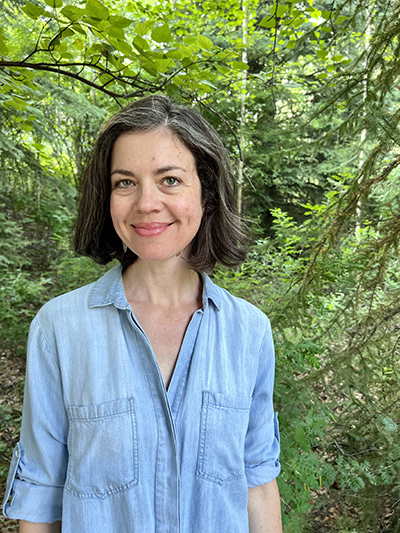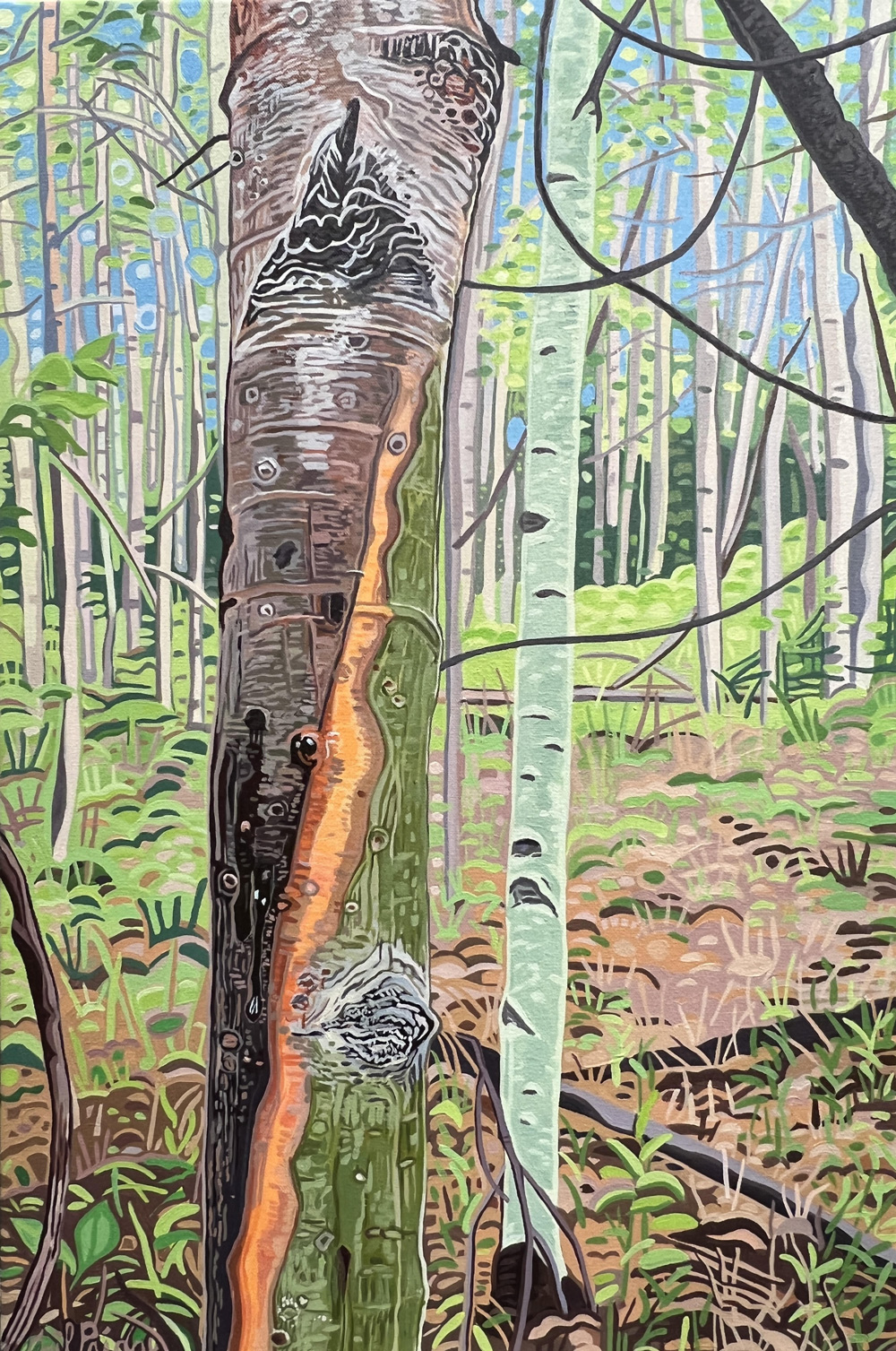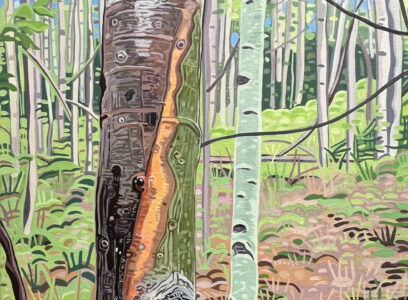Gail Priday

The Margin Between
I joined forest pathologist Dr. Lori Winton and entomologist Dr. Sydney Brannoch on a visit to Bonanza Creek Experimental Forest to find trees with active cankers on a beautiful June day. We drove to where they had been monitoring trees and knew of several brightly colored specimens. The cankers are often subtle in appearance, but they are sometimes bright orange. Lori brought a jug of water to pour on infected trees. This field trick enhanced the colors, making it easier to see cankers, but for most, this trick was unnecessary as the colors were remarkably vibrant without the water. The canker typically starts at the top of the tree and runs along the bole, rapidly killing the cambium as it goes. The part of the tree still unaffected by the canker retains its greenish color while the orange canker moves down, indicating death. There is often a clear line between the canker and the still healthy portion of the trunk. You can feel a slight ridge if you run your finger over the line. This ridge is the margin between the living and the dead bole. Lori and Sydney pointed out markings made by researchers on the trees to measure the movement and growth of the cankers over time. Outlines traced over the cankers during previous visits showed how quickly the disease was moving.
Once again, I was struck by the complexity of the awful beauty. Had I been unaware of the disease running through these trees, I would have thought I had discovered a magical grove of chromatically blessed trees. The day could not have been more lovely. The sun was warm, and the air was full of the sweet smell of fresh earth and new things growing, yet mixed with a strange alcohol-like smell of liquid seeping from the cankers. The ominous buzz of mosquitos clashed with the bright blue sky and green leaves. I created this painting to document a young tree that will likely die by summer’s end. It is surrounded by shoots of new life, next to another young aspen, glowing with life, that may or may not succumb to the same fate. The colors of the tree are eye-catching, yet the bark is seeping, and an unhealthy ashiness creeps in. If you could move your fingers across this tree, you would feel the margin, the vertical ridge, between the living and the dead.
The opportunity to go to the field and learn about a topic firsthand from the scientists conducting the research, and to be able to ask endless questions, was key to this collaboration. The scientists I worked with are passionate about their work and generous with their time. I am thankful for their dedication to the boreal forest and for taking the time to share their research with me.
Gail Priday
Gail Priday is a visual artist living in Fairbanks, Alaska. She holds an MFA in painting and printmaking from the University of Alaska Fairbanks, an MEd in art education from Towson University, and a BA in art from James Madison University. Priday finds inspiration from the natural world, specifically the boreal forest. Her work has been featured in exhibits, public spaces, and private collections throughout Alaska and beyond. She values interdisciplinary collaborations and has been involved in ITOC since 2016. She enjoys working in the studio, long walks in the woods, and spending time with her family.
Website: gailpriday.com


